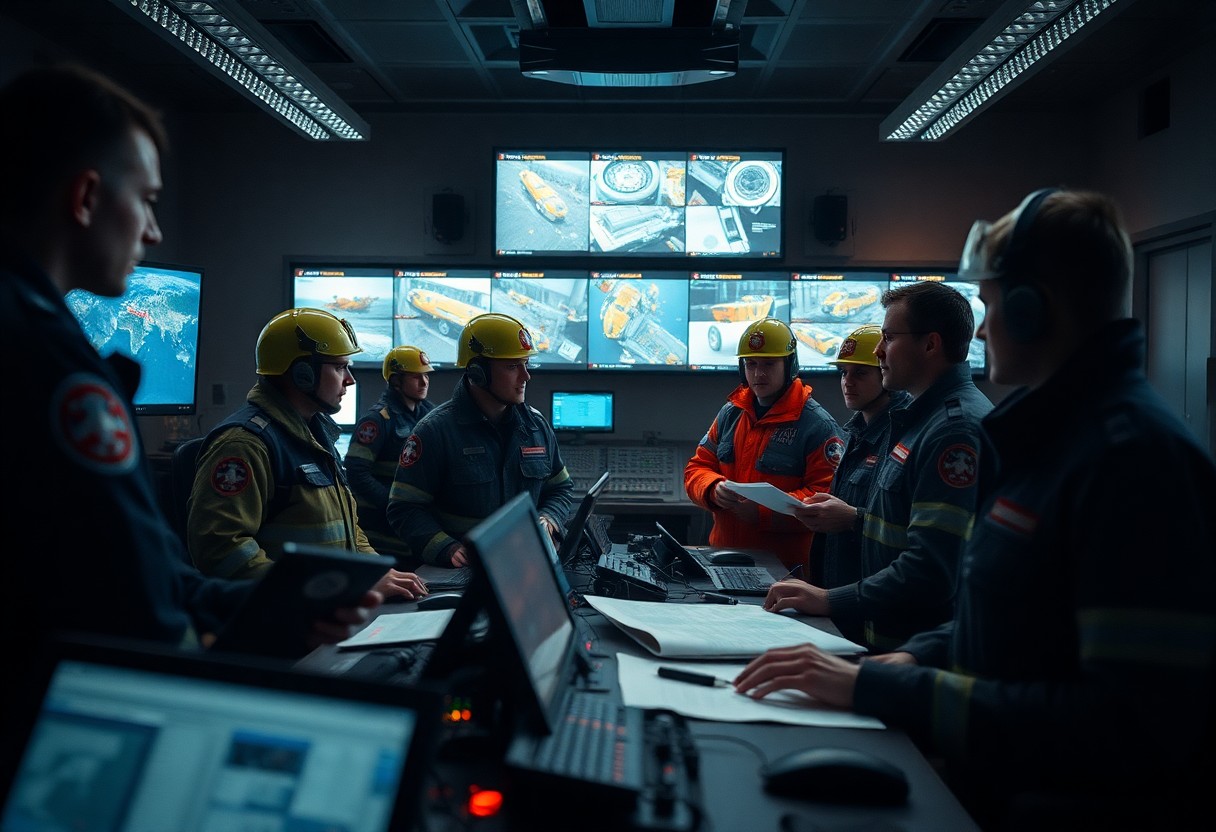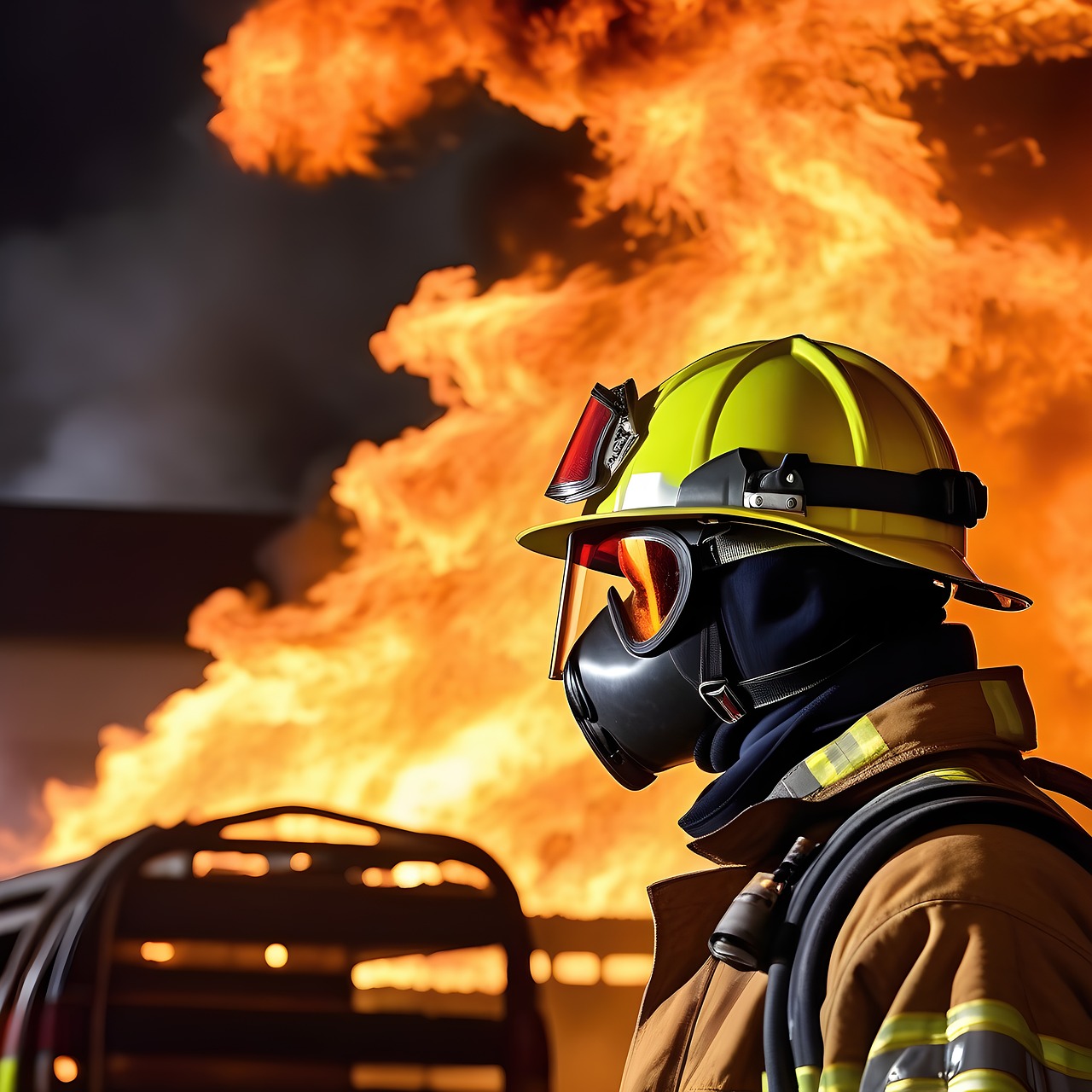There’s a vital need for you to establish a structured apparatus order to effectively tackle various emergency situations. When chaos strikes, having a systematic approach can mean the difference between life and death. In this guide, you will learn how to organize resources and personnel efficiently, ensuring that rapid response and effective communication are prioritized. By following these steps, you can enhance your team’s preparedness and ability to handle emergencies with confidence.
Understanding the Need for a Structured Apparatus Order
A structured apparatus order is vital in emergency situations to ensure that resources are deployed effectively and efficiently. By establishing a clear framework for responding to various crises, you can minimize confusion and enhance the safety of both responders and the community. This planning allows for rapid decision-making, ensuring that the right equipment and personnel are in place when every second counts.
Importance of Preparedness
Preparedness enhances your ability to respond efficiently during emergencies. When you have a structured apparatus order in place, which includes training and drills, you significantly increase your chances of managing unexpected crises effectively.
Different Types of Emergency Scenarios
The world you live in can present a variety of emergency scenarios that require immediate attention and action. Here are some common types:
| Natural Disasters | Hurricanes, floods, earthquakes |
| Public Health Emergencies | Pandemics, disease outbreaks |
| Technological Emergencies | Cyberattacks, hazardous material spills |
| Man-made Disasters | Active shooter situations, terrorism |
| Community Emergencies | Large gatherings, civil unrest |
All emergency scenarios require you to have a tailored response plan. Each type poses its unique challenges, necessitating specific apparatus orders to ensure effective response protocols. Proper planning can make a significant difference in mitigating risk and protecting lives. By developing a plan for various situations, you can navigate through them more successfully than without one. Knowing what resources are needed for each scenario enhances your preparedness.
Conclusion
A successful emergency response hinges on your ability to adapt to different situations. You must familiarize yourself with both the types of emergencies and the necessary responses to each.
| Personal Preparedness | Emergency kits, communication plans |
| Resource Allocation | Apparatus placement, training |
| Risk Assessment | Identify vulnerabilities, prioritize responses |
| Community Involvement | Engage with local agencies, increase awareness |
| Monitoring and Evaluation | Review plans, identify gaps |
By understanding these elements, you can create a structured order that enhances your overall emergency response. Knowing the different types of emergencies helps you formulate the necessary plans to keep yourself and your community safe.
Key Factors to Consider
Clearly, implementing a structured apparatus order involves several key factors that significantly impact the effectiveness of your emergency response. Consider the following aspects:
- Resource allocation
- Response time
- Communication channels
- Training and drills
Assume that prioritizing these elements will lead to a more organized and effective response in emergency situations.
Assessing Resources Available
Any effective emergency plan starts with a thorough assessment of the resources at your disposal. Evaluate the equipment, personnel, and support systems currently available, ensuring you identify what can be utilized or may need to be acquired. This allows you to allocate resources effectively and fill any gaps.
Identifying Potential Risks
To create a robust emergency plan, you must identify potential risks that could impact your organization. Research different scenarios relevant to your environment and analyze factors such as weather conditions, geographical vulnerabilities, and potential human errors that could escalate the situation.
Plus, by understanding and mapping potential risks, you can proactively develop strategies to mitigate them. Consider how natural disasters, technology failures, or human threats could affect your operations. Identifying these threats allows you to implement detailed action plans, adjust your resource allocation, and enhance training for your team, leading to a more secure and prepared organization.
How to Develop a Structured Apparatus Order
Assuming that you have identified the range of emergency scenarios your organization may face, the next step is to develop a structured apparatus order that enhances your response efficiency. This order should outline the specific apparatus and equipment needed based on the nature and severity of each incident. Engaging with your team in this process ensures that everyone understands their roles and responsibilities while streamlining communications during emergencies.
Creating a Step-by-Step Plan
Plan your structured apparatus order by following this step-by-step approach:
| Step | Description |
| 1 | Assess emergency scenarios and prioritize their likelihood. |
| 2 | List required apparatus for each scenario. |
| 3 | Organize equipment based on functionality and urgency. |
| 4 | Create a communication protocol for mobilization. |
| 5 | Regularly review and update the apparatus order plan. |
Prioritizing Apparatus and Equipment
Some emergencies require immediate action where time is of the essence, so it is vital that you prioritize the apparatus and equipment most needed in these scenarios. Assess each piece based on its importance and effectiveness in addressing various incidents to ensure that your teams can act swiftly and decisively.
Structured prioritization of apparatus is vital for effective emergency management. When you focus on the most impactful equipment, such as life-saving tools or hazard containment systems, you enable your team to respond to the most demanding situations first. By considering the level of danger and urgency for each scenario, your ordered approach equips your personnel with the best chance of success and safety during critical incidents.
Tips for Effective Implementation
Not only should you establish a clear communication plan, but also consider the following strategies to enhance your structured apparatus order:
- Engage all stakeholders in the process
- Utilize technology to streamline operations
- Regularly test your plans in realistic scenarios
- Gather feedback for continuous improvement
- Document every step thoroughly
After incorporating these practices, your emergency response will be more efficient and reliable.
Training Personnel
You must provide comprehensive training for your personnel to ensure they are familiar with the structured apparatus order. Tailor the training sessions to address different emergencies, and use practical exercises to simulate real-life scenarios. This will equip your team with the confidence and expertise needed to respond effectively.
Regularly Revising Plans
With a dynamic environment, it’s crucial to keep your emergency response plans updated. Conduct periodic reviews to assess any changes in your organization or new developments in emergency response protocols, ensuring your team’s readiness.
Another important aspect of revising plans is the need to stay informed about evolving threats and risks that could impact your operations. By regularly reassessing your strategies, you can identify and address any gaps while also documenting lessons learned from past incidents. This proactive approach not only enhances your response capability but also fosters a culture of continuous improvement, leading to stronger organizational resilience in the face of emergencies.
Monitoring and Evaluation
Unlike a static plan, effective emergency response requires ongoing monitoring and evaluation to ensure that your structured apparatus order remains relevant and efficient. By continually assessing your procedures and their outcomes, you can adapt to changing circumstances and bolster your preparedness for various emergency scenarios.
Assessing the Effectiveness of the Order
An objective performance assessment will enable you to pinpoint both strengths and weaknesses in your emergency response process. Look closely at the outcomes to evaluate whether your strategies are yielding the intended results, focusing on timelines, coordinated efforts, and resource allocation.
Gathering Feedback for Improvement
Assuming that you have implemented the order in real scenarios, collecting feedback is imperative for enhancing your approach. Involve team members and stakeholders in the feedback process to capture a variety of perspectives for comprehensive analysis.
Improvement in your emergency response strategy stems from actively seeking input from all involved parties. Your team’s insights can reveal gaps in training or resources that may compromise safety. Conducting surveys or debriefing sessions allows you to gather valuable perspectives on what worked and what didn’t. Additionally, consider setting up anonymous feedback channels to ensure honest and constructive input. This iterative feedback process is key to refining your structured apparatus order and enhancing your overall readiness for emergencies.
Common Challenges and Solutions
Once again, implementing a structured apparatus order can present a variety of challenges that require careful consideration. Issues such as resistance from personnel, limited resources, and a lack of familiarity with new protocols are commonly encountered. Identifying these hurdles early on allows you to devise effective solutions that foster a smoother transition. Engaging your team in the development process and investing in training can significantly enhance commitment and performance in emergency scenarios.
Overcoming Resistance to Change
One effective way to tackle resistance to change is through open communication and involvement. Explain the reasons behind the new structured procedures and how they will improve overall efficiency. Empowering your team by soliciting feedback and incorporating their insights can create a sense of ownership, making them more likely to embrace the changes.
Managing Resource Limitations
Some challenges stem from limited resources, which can impede your ability to implement a new order. Careful planning and prioritizing tasks based on immediate needs can help in reallocating available resources effectively.
Overcoming resource limitations requires a strategic approach. Assess your current assets, including personnel and equipment, to identify the most efficient utilization methods. It may involve reallocating funds, seeking external partnerships, or leveraging existing community resources to fill gaps. Focus on training personnel to maximize the use of what you already have and consider cross-training team members to ensure their versatility. This way, you can enhance the team’s capability without incurring significant additional costs.
Final Words
On the whole, implementing a structured apparatus order for various emergency scenarios enhances your preparedness and response efficiency. By assessing potential emergencies, organizing your resources, and establishing clear protocols, you position yourself and your team to act decisively. Regular training and drills ensure that everyone understands their roles and the flow of operations during an incident. Ultimately, an organized and well-communicated approach minimizes confusion and maximizes safety when every second counts.
Q: What is a Structured Apparatus Order and why is it important for emergency scenarios?
A: A Structured Apparatus Order refers to a systematic approach for deploying various emergency response units and equipment based on the specific needs of an incident. This organization enhances coordination among first responders, allowing them to act more efficiently and effectively. Implementing such an order ensures that resources are utilized appropriately, minimizing confusion and improving response times in high-pressure situations.
Q: How can I develop a Structured Apparatus Order for different types of emergencies?
A: To develop a Structured Apparatus Order, begin by assessing potential emergency scenarios relevant to your location, such as natural disasters, medical emergencies, or hazardous material incidents. Following this assessment, create a detailed inventory of available resources including personnel, vehicles, and equipment. Then, develop response protocols that outline the specific apparatus needed for each scenario, taking into account factors like the scale of the emergency, geographic considerations, and interagency collaboration. It is vital to conduct regular training sessions and drills to ensure all responders are familiar with the order and can carry it out seamlessly during actual events.
Q: What are the key elements to consider when implementing the Structured Apparatus Order in the field?
A: Key elements to consider when implementing the Structured Apparatus Order include communication, flexibility, personnel training, and ongoing evaluation. Ensure there are clear communication channels among responders and a designated command structure to facilitate decision-making. The plan should also be adaptable to changes in the situation, as emergencies can evolve rapidly. Regular training and practice are vital to prepare personnel for their roles within the structured order. Finally, post-incident evaluations will help refine the approach and address any issues encountered during the response, ensuring continuous improvement for future emergencies.


